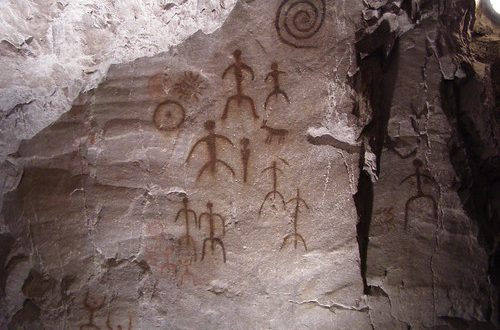
While creating the next instalment of our Ancient World in London video series on ancient astronomy, we came across an odd little artefact called the Ishango Bone. Exotic-sounding, it’s little more than a knobbled baboon’s fibula, but the 25,000-year-old notches along its length are much more than a caveman’s conquests.
Discovered in the then-Belgian Congo by Jean Heinzelin de Braucourt in 1960, the bone was first thought to be around 10,000 years old. Yet later tests pushed its date back another 15,000 years, around 20 millennia before the first-ever civilizations sprang from the Middle East. Today it remains on display at the Royal Belgian Institute of Natural Sciences in Brussels.
But what makes the Ishango Bone so special is that it might be the world’s oldest astronomical record. Or so thinks famed astronomer Paul Murdin, who told me after a Heritage Key talk on his latest book Secrets of the Universe(read a review here). “It’s thought that the lengths of the scratches represent the phases of the moon,” said Paul. “As the moon gets bigger, the scratches get larger until the full moon.
“Maybe the owner was a woman who was keeping track of her menstrual cycle, but this person was making astronomical observations 25,000 years ago,” Paul adds. It’s amazing to think of the people all those unimaginable years back, gazing at the sky with the same wonder we all do now.
The Ishango Bone might just be the greatest ancient artefact in the world – greater, even, than the Golden Death Mask of Tutankhamun. It connects us to our ancient ancestors so much simpler than other relics, because it typifies a primal thirst for knowledge we all still cling onto today. Look out for our video on ancient astronomy this week and see if you agree – we’ll also be discovering Stonehenge’s best-kept secrets.




